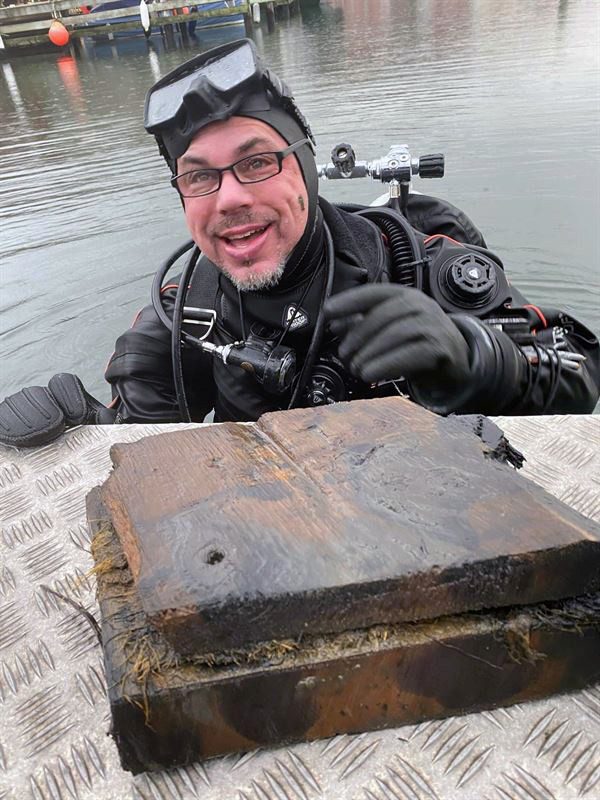No sooner is one historic underwater find reported in 2m of water than another follows hot on its heels. Yesterday (7 February) Divernet brought news of an ancient port revealed by a snorkeller in Turkey – today it’s a mediaeval shipwreck off Fjällbacka on Sweden’s west coast, one of the oldest cog-style vessels ever to be discovered in Europe.
The wreck was located last September but has been reported only now that experts at the University of Gothenburg’s Department of Historical Studies have finished dating the tree rings from timber samples collected by its divers.
“The wreck is made from oak cut between 1233 and 1240, so nearly 800 years ago,” says maritime archaeologist and project leader Staffan von Arbin of the rare cog discovery. The oak would have originated in north-western Germany.
Archaeologists from the university had been looking for shipwrecks along the coast of Bohuslän province using an airborne drone when they discovered the vessel off the island of Dyngö. They then carried out what they describe as a “limited survey” on scuba.
The project forms part of von Arbin’s PhD on medieval seafaring and transport geography. “We were actually searching for a completely different wreck – a shipwreck that has previously been dated to the beginning of the 1500s,” he told Divernet. “Instead, we found a wreck from the 1230s.
“The shipwreck is situated in a natural harbour. On the drone footage, a darker structure could be seen close to land in approximately 2m of water, contrasting against the surrounding lighter seabed. When I inspected the structure by diving, it was revealed that it was the remains of a heavily built ship of the medieval cog type.”


von Arbin believes that the discovery underlines the importance of Bohuslän as an international maritime trade route at the time. Cogs first appeared in north-western Europe around the 10th century AD but it was only by the 12th century that they started replacing Viking-style knarr merchant vessels.
Propelled by a square-rigged sail on a single mast, cogs’ flat bottoms allowed them to carry more cargo than knarr and to be more stable when loading and unloading. Their high sides also made them more difficult for assailants to board at sea.
The surviving hull section is about 10m long by 5m across, although von Arbin believes that the ship would originally have been as long as 20m.
The bottom planking had been flush-laid while the side planks were overlapping, or clinker-built. Seams between the planks had been sealed using moss, a method typically found in cogs.
Intense fire
“We figured that the shipwreck was most likely of medieval age, but exactly how old it was we didn’t know until the results of the dendrochronological analysis arrived last week,” said von Arbin. “It turns out that the Dyngö cog is the fourth or fifth oldest cog ever discovered!”
Why the ship sank is unknown, although charring indicated that an intense fire had occurred aboard. Norway’s southern coast, which included Bohuslän in the Middle Ages, saw periods of intense pirate activity, so an attack is one possibility.
The first decades of the 12th century also saw internal struggles for the Norwegian crown, so the vessel might have been involved in a battle – or fire might have broken out accidentally while it was anchored.
Von Arbin and his team hope to carry out further dives on the cog wreck, but he points out that this requires both a permit from the county administrative board and extensive external funding – which, he says, is currently not available.

